If you ask people how many “stan” countries there are in the world, most people will dismiss you as a geography geek or pretentious traveller.
However, if you were to ask this same question on a YPT trip, you’d likely get a solid answer. There are seven stans countries – Afghanistan, Kazakhstan, Kyrgyzstan, Pakistan, Tajikistan, Turkmenistan, and Uzbekistan.
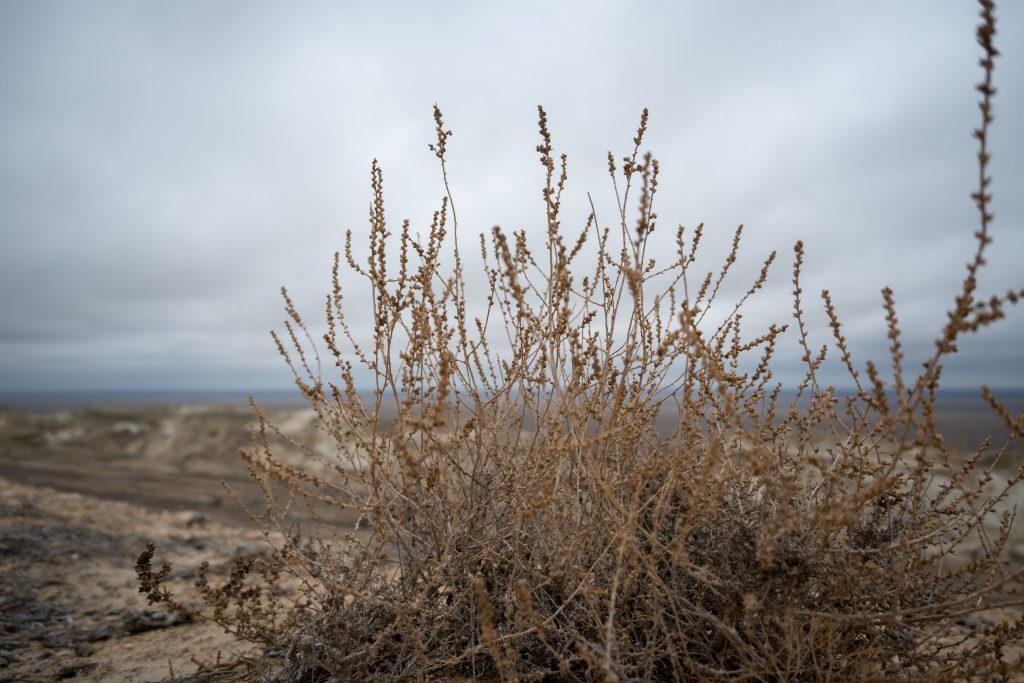
Someone may even (correctly) mention that other provinces, regions, and autonomous republics have stan in their name. Notable examples could include Russia’s Tatarstan, Afghanistan’s Nuristan, and India’s Rajasthan.
Then, the discussion would inevitably descend into “how many of them have you been to” and whether “Afghanistan should be considered South or Central Asia.”
If you were to mention “Karakalpakstan,” however, even the most well-travelled hippie, country collector, or retired aid worker will likely give you a blank look.
Not only does this place very much exist — with a land area larger than England — but there’s a reason why many people have started to visit Karakalpakstan.
Here’s your complete guide to visiting Karakalpakstan. This is why you should travel there, how the republic is unique, and why it’s a far more important region than anyone gives it credit for.
Table of Contents
So, what and where is Karakalpakstan?
Ironically, the most obscure of the stans sits in the most touristy of them all – Uzbekistan. However, almost as if it’s hiding in plain sight, it’s still easy to overlook on a map.
Karakalpakstan, officially the Republic of Karakalpakstan, is an autonomous region in far western Uzbekistan. It borders Kazakhstan to the west and north, Turkmenistan to the south, and the Uzbek provinces of Xorazm, Bukhara, and Navoiy to the east. If you’ve visited the iconic Silk Road city of Khiva (if not, you must!), then you’ve already come within touching distance of visiting Karakalpakstan.
The republic is huge — covering almost 4/10ths of Uzbekistan’s land area — yet with only around 2 million of Uzbekistan’s 35 million people. Much of Karakalpakstan consists of desert, which contributes to its low population density.
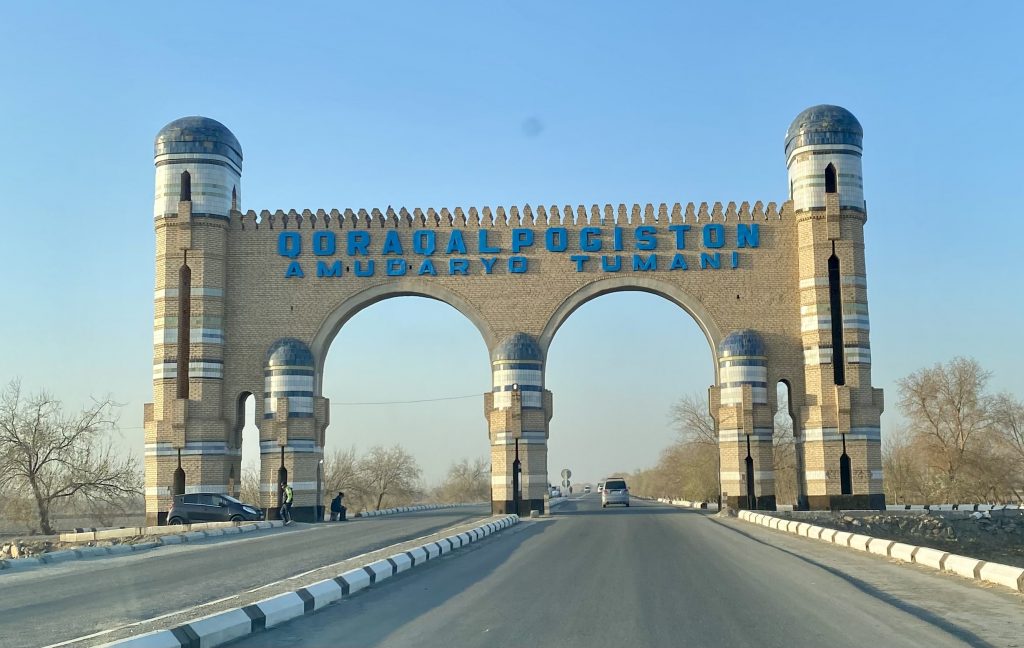
While being part of Uzbekistan, Karakalpakstan is the designated homeland of the Karakalpak people, a distinct ethnic group with unique arts, cultures, and customs. They speak their own language, which is much closer to Kazakh than Uzbek. Karakalpaks, like Kazakhs, are traditionally nomadic, whereas Uzbeks are not.
The republic is now split almost equally between Karakalpaks and Uzbeks – each has around 35% of the population. Kazakhs make up 15% and Turkmens 5%, with various minorities making up the rest. Notably, there is a large Koryo-saram population, the ethnic Koreans deported by Stalin to the USSR. They largely live in Nukus (Nókis), the capital.
Karakalpakstan is known to most of the world for two things: the Aral Sea and the Savitsky Museum, both of which are must-see attractions in their own right. However, while much of the province is desert – giving it a reputation of being desolate and lifeless – first looks are deceptive. We’ve fallen in love with visiting Karakalpakstan’s ancient fortresses, authentic markets, and traditional Karakalpak culture, all of which continue to become more accessible with each passing year.
History of Karakalpakstan
Like much of the Silk Road, Karakalpakstan has long been a crossroads of ancient trade routes, foreign invasions, and shifting political allegiances over the past millennia.
While hard to believe now, the Amu Darya River historically reached all parts of the region, making it one of the most fertile areas in Central Asia. Many ancient fortresses and settlements, like Toprak Kala and Ayaz Kala, were built along these routes, serving as both trade hubs and military outposts.
During the Persian Empire, the area that is now Karakalpakstan came under Persian influence before falling under the control of Alexander the Great. This period brought cultural exchange as Greek, Persian, and Central Asian influences merged. Even when Alexander’s empire fell, the region continued to be a melting pot of various cultures.
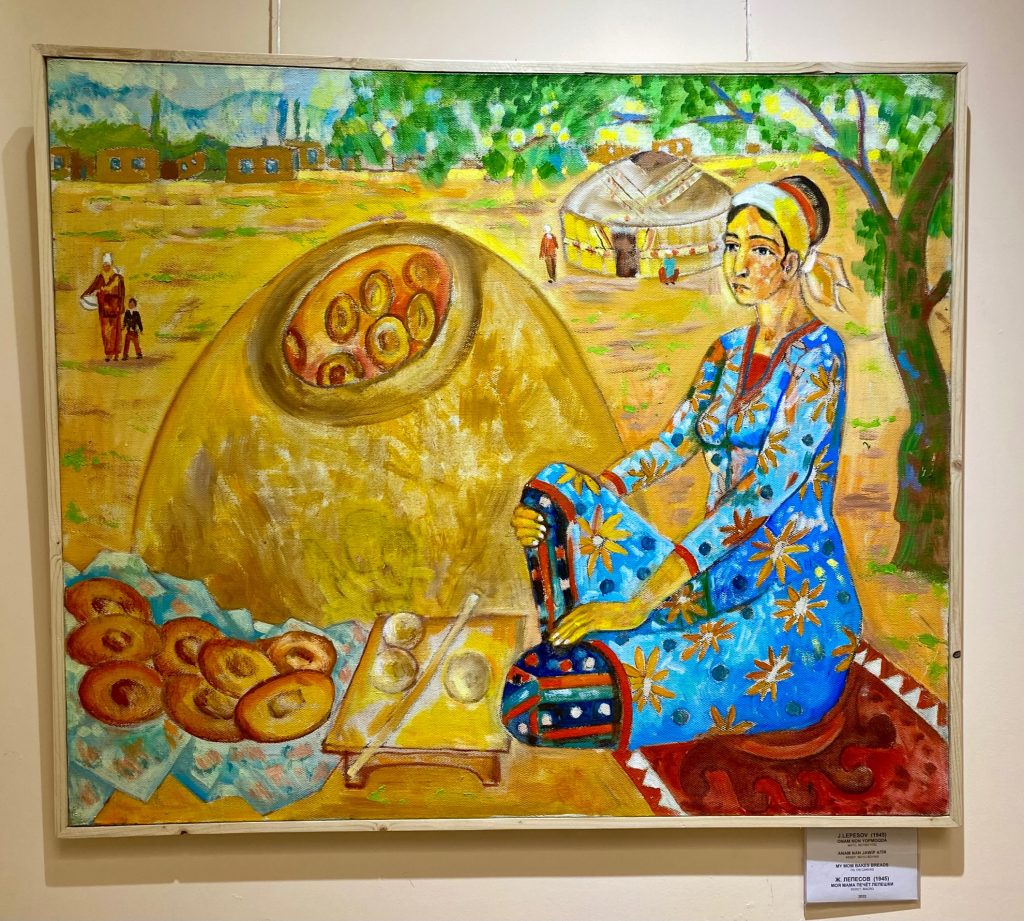
With the rise of Islam in the 7th century, Arab influence gradually spread across the region, bringing Islamic culture and trade. Cities around Karakalpakstan thrived as goods, ideas, and cultures flowed through. Despite this, Karakalpakstan preserved its unique semi-nomadic lifestyle, even as other groups like the Uzbeks and Tajiks settled and built the great cities of the Silk Road.
In the 13th century, the Mongol Empire under Genghis Khan conquered Central Asia, including the lands around the Amu Darya. Later, under Amir Timur’s dynasty, the region continued to develop its culture and architecture. However, Karakalpakstan remained undeveloped compared to the likes of Samarkand and Bukhara.
The Karakalpak people began to emerge as a distinct group around the 16th century. The Karakalpaks were semi-nomadic, with a lifestyle adapted to the arid climate. Therefore, they focused on animal herding and small-scale agriculture along the Amu Darya.
Over time, the Karakalpaks formed tribal confederations and inhabited areas around the Aral Sea and both the Syr Darya and Amu Darya rivers. They lived alongside Uzbek, Kazakh, and Turkmen groups. Often, they formed loose alliances or came under the influence of larger Khanates.
The Russians first arrived in the 19th century and incorporated the region into its territory. The Khanate of Khiva, which influenced the Karakalpaks, became a Russian protectorate by 1873. After the Russian Revolution in 1917, Karakalpakstan underwent a period of political reforms before being integrated into the Soviet Union.
In 1924, the Soviet government established the Karakalpak Autonomous Oblast within the Kazakh ASSR. However, in 1936, it was reassigned to the Uzbek SSR as the Karakalpak Autonomous Soviet Socialist Republic (ASSR). This shift was controversial, given the closer cultural ties between the Karakalpaks and Kazakhs. Many consider this as a textbook example of Stalin’s ‘divide and conquer’ strategy toward the USSR’s ethnic minorities.
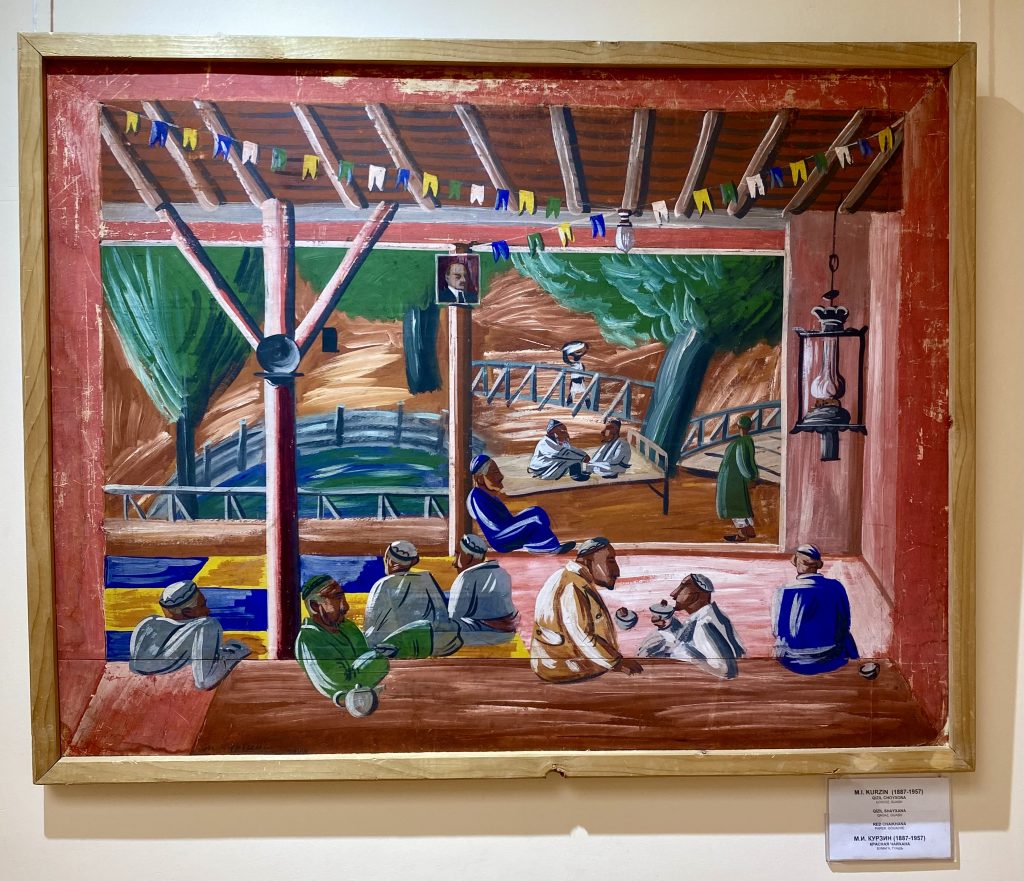
Under Soviet rule, the Karakalpak people faced numerous changes, including forced collectivization, shifts in traditional lifestyles, and significant economic hardship. However, education was prioritized, and literacy rates rose from near zero to almost universal levels. To support this, the Soviets promoted the Cyrillic script for the Karakalpak language, alongside the use of Russian.
The most defining aspect of Karakalpakstan’s recent history has been the Aral Sea crisis. In the 1960s, Soviet irrigation projects diverted the Amu Darya and Syr Darya rivers to support cotton farming, which initially produced a major economic boom. However, this dramatically reduced water flowing into the Aral Sea, causing it to shrink. Today, over 90% of the sea has dried up, leaving a desert wasteland that consumes ever more territory.
Visiting Karakalpakstan – the Current Situation
Karakalpakstan today faces considerable challenges, most of which stem from environmental and economic issues caused by the Aral Sea disaster. However, tourism may become part of the republic’s revival, as visitors are drawn to its unique landscapes, historical sites, and rich cultural heritage.
Karakalpakstan, in many ways, embodies the core challenges facing Central Asia today: water scarcity, economic inequality, environmental degradation, emigration, and human rights issues. This allows it to offer a unique window into both the history and the contemporary struggles of Central Asia.
With the dissolution of the Soviet Union in 1991, Uzbekistan gained independence. The former Karakalpak Autonomous Soviet Socialist Republic became the Republic of Karakalpakstan.
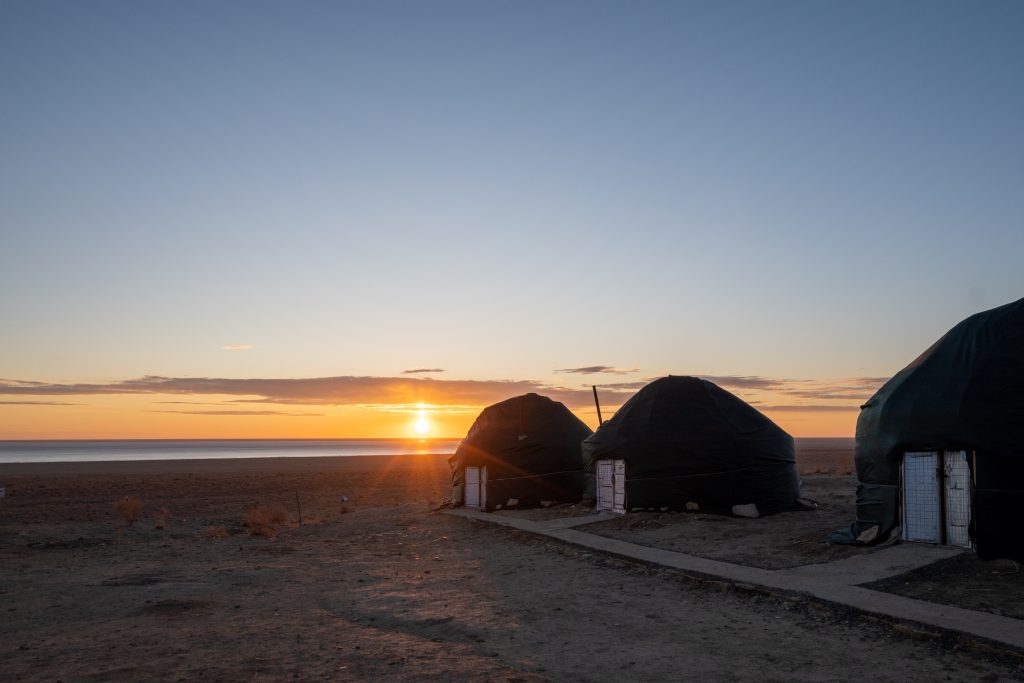
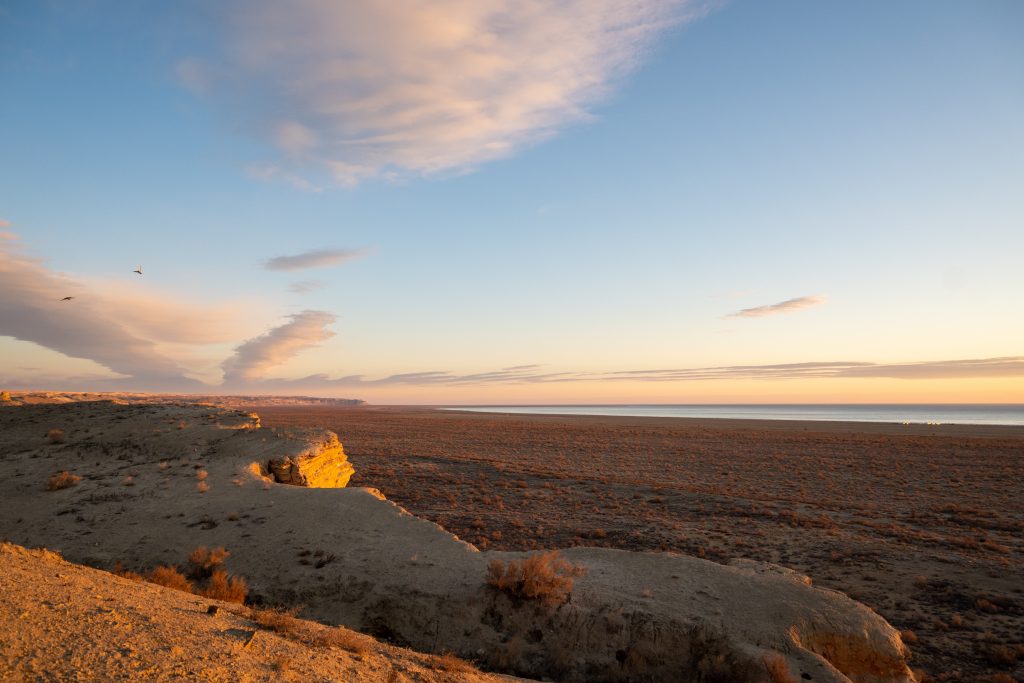
Although the Uzbek constitution grants the region nominal autonomy in theory, Karakalpakstan remains firmly under the control of the Uzbek government. In recent years, there have been calls for increased autonomy — even independence — but these movements have been met with strict suppression.
Karakalpakstan’s most pressing issue is the calamity of the Aral Sea’s drying, which has been described as “one of the planet’s worst environmental disasters.” The subsequent toxic dust storms, soil salinity, and collapse of local fisheries have severely impacted health and livelihoods. Respiratory illnesses, cancers, and widespread economic hardship are ubiquitous, and it remains one of the poorest regions of Uzbekistan. Many people have left, either to other cities in Uzbekistan or to Russia.
Despite these challenges, the Karakalpak people are committed to preserving their language, arts, and cultural heritage. Tourism offers hope for Karakalpakstan’s future, providing a pathway to balance tradition with modernity. This is as the region continues to come to terms with the Aral Sea’s disappearance.
Cuisine of Karakalpakstan
Karakalpak food incorporates the features of other Central Asian cuisines, especially that of Kazakhstan and Turkmenistan.
Meat is used in abundance. Horse, rabbit, and camel are local favourites despite being rare in the rest of Uzbekistan. If you visit a popular restaurant in Nukus, you are likely to find Kazakh dishes such as kuurdak (fried meat, onions, and potatoes) and beshbarmak (a flat pasta-style dish with vegetables and horse meat). Of course, you’ll find Shashlik kebabs everywhere.
When visiting Karakalpakstan, some examples of distinctive Karakalpak dishes you may see include:
- Mayek Borek: these are rolled squares of dough, filled with whipped eggs and butter. They are then cooked in a pan of boiling water and fried onions.
- Zhueri Gurtik: small, flat dumplings made from millet and topped with meat and vegetables.
- Ak saulak: another dish that is finished with milk and butter. Thin cakes of wheat flour are prepared and baked in a large pot. On special occasions, they are topped with meat.
- Turak: a spiced smoked dried cheese, not unlike the Kurut found across Central Asia.
Given Karakalpakstan’s fishing heritage, spicy fish soup is also a local favourite, which often includes millet dumplings. Dried fish is also a much-loved snack, despite the effective end of the region’s fishing industry.
What is there to see in Karakalpakstan?
The Savitsky Museum
Formally known as the Nukus Museum of Art, this is one of Central Asia’s most remarkable cultural institutions. Located in Nukus, the museum houses an extraordinary collection of avant-garde Russian and Soviet art, second only to that in St. Petersburg’s Russian Museum. Simply put, no one visiting Karakalpakstan can skip the Savitsky Museum!
Its founder, Igor Savitsky, was committed to rescuing the works of art that had been banned during Soviet purges. He hid them in Nukus, believing (correctly) that his portfolio would never be discovered in such a remote, end-of-the-world place. The museum holds over 90,000 pieces, including paintings, textiles, sculptures, and historical artifacts, and is famous across the world. Even if you have little interest in art, there is a reason people make the long trip to Nukus just to visit the Savitsky museum.
The Aral Sea and the town of Moynaq
Visiting the graveyard of the Aral Sea – which dried up despite once being the size of Ireland – is a haunting, impactful experience that brings home the devastating impact of environmental degradation.
The town of Moynaq emphasizes this like nowhere else. Once a thriving fishing port on the shores of the Aral Sea, it is now a surreal place, semi-abandoned and more than 300km from the sea that once sustained it. Rusted fishing boats lie stranded in the desert sand, forming “ship graveyards” that sit on a desolate wasteland that stretches as far as the eye can see.
The small museum in Moynaq tells the story of the Aral Sea’s tragic decline, including photos of the town in its heyday and even tins of fish once produced in the town. Murals and memorials reflect sorrow yet local resilience, a community mourning for something that will likely never return.
Even for the most well-travelled, a trip to the Aral Sea area is a humbling, depressing, yet essential experience. We highly recommend renting a 4×4 to venture across the dried seabed, where you can spend a night in a traditional Karakalpak yurt. You’ll be warmly welcomed by the local people, whose hospitality is renowned even by Central Asian standards!
The Khorezm Fortresses
Found in the deserts of Southeastern Karakalpakstan, this collection of over fifty forts dates back over 2,500 years. Built around the Khorezm Oasis, they are a striking testament to the region’s rich history and military architecture and were once vital strongholds for the Khorezmian civilization.
The most famous are the Ayaz Kala and Toprak Kala fortresses, which both offer stunning views of the surrounding desert. Standing amongst the ruins will allow you to appreciate the strategic importance of the region. Visiting Karakalpakstan’s Khorezm Fortresses today is like stepping back in time, especially as you explore the silent remnants of a once-thriving civilization in the heart of Central Asia’s arid landscapes.
The Chilpik Tower of Silence
Between Khiva and Nukus lies one of the most unusual yet fascinating religious sites in the world. Dating back to the 1st century, this circular tower was once used as a “tower of silence.” Zoroastrians – who once formed one of the largest communities in Uzbekistan – would leave their deceased to be exposed to the elements, allowing vultures to clean the bodies.
Today, the Chilpik Tower stands as a striking reminder of the region’s diverse spiritual history, perched on a hill overlooking the vast desert. Visiting the tower offers a rare glimpse into an ancient religious custom that, while no widely longer practiced, continues to influence Uzbek and Karakalpak culture.
How to get to, and around, Karakalpakstan
While Nukus is a remote city, and the republic isn’t exactly on the main route to anywhere, visiting Karakalpakstan isn’t as difficult as you may imagine.
Uzbekistan Airways flies twice daily from Tashkent. As the route is subsidized, prices are very reasonable, and the flight time is less than 90 minutes. There are also direct connections to Almaty, Moscow, and even Istanbul.
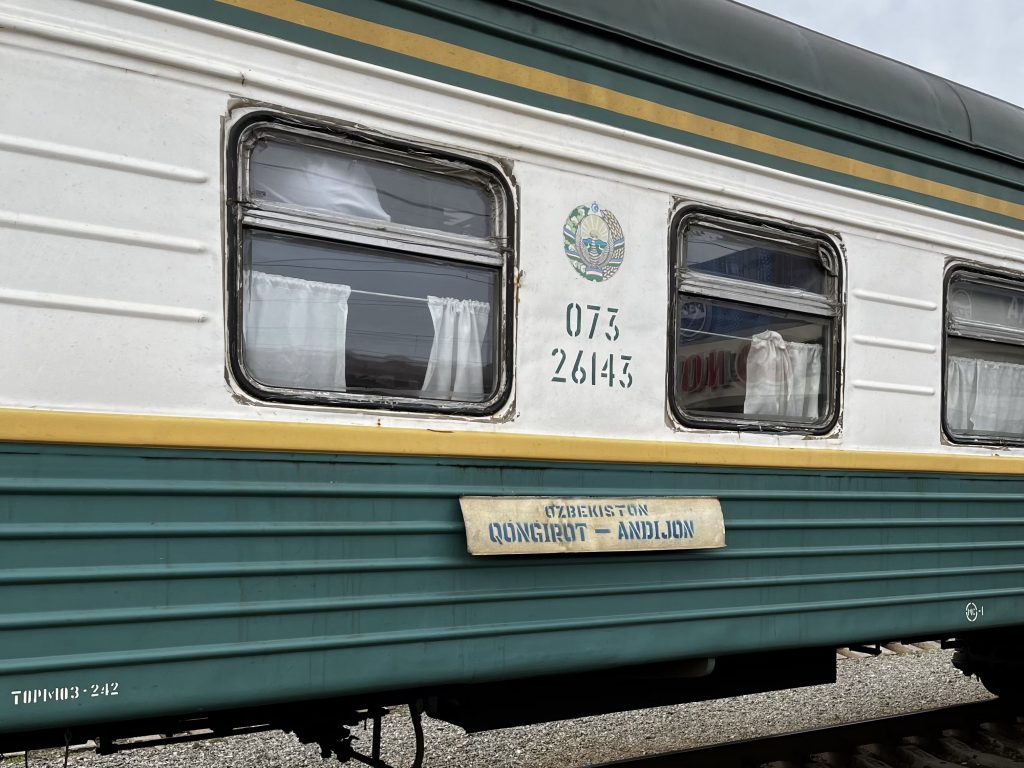
The wonderful Uzbek train network also connects Nukus to the rest of the country. A daily sleeper train connects the city to Tashkent, Samarkand, and Bukhara – tickets start at an unbeatable $20 for a hard sleeper bed. The weekly Tashkent to Volgograd (Russia) service also passes through Nukus and can be used to explore western Kazakhstan.
To visit Karakalpakstan once you’re there, the best options are shared taxis and marshrutkas (minibuses). For example, marshrutkas leave on an unfixed schedule from Nukus to Moynak, taking around four hours and costing less than a few dollars.
If you want to venture onto the Aral Sea, you must arrange a 4×4 tour. Not even shared taxis operate beyond Moynak, and you’ll want an experienced driver to handle the terrain and avoid getting lost in this vast desert.
How can I visit Karakalpakstan?
Being the experts in both Central Asia and organizing trips to obscure destinations, we’re in a great position to make your adventure to visit Karakalpakstan possible!
We’re planning our first group trip to the republic soon, but can organize a private tour whenever works for you. Just let us know your dates, budget, and specific interests, and we’ll craft the trip of your dreams. Drop us an email with any questions or enquiries you have, and we will get back to you!





